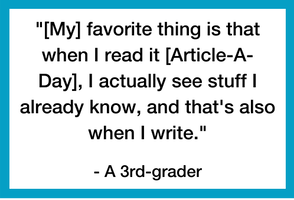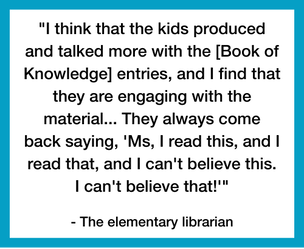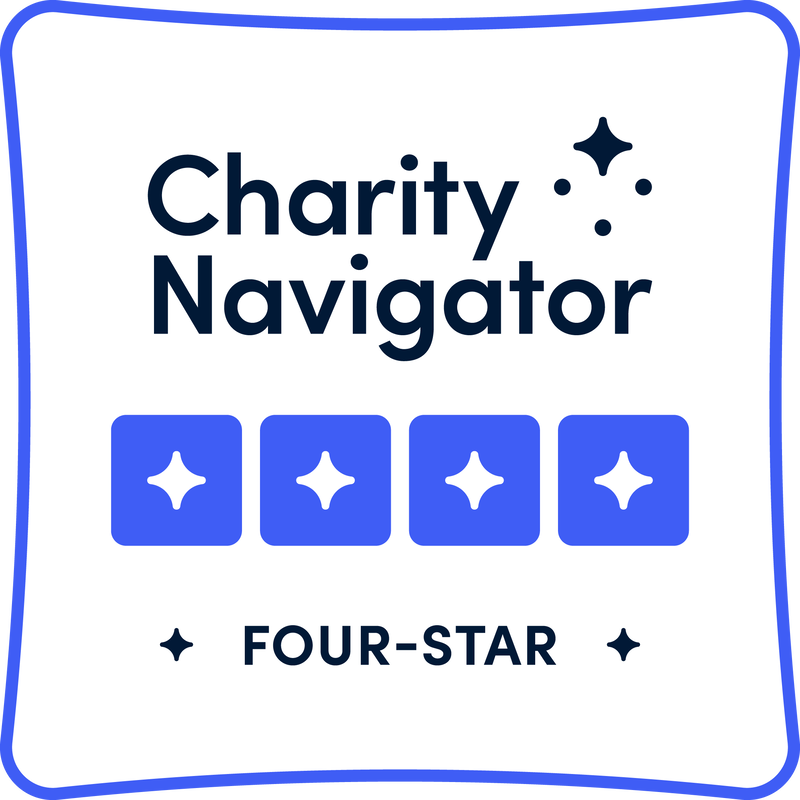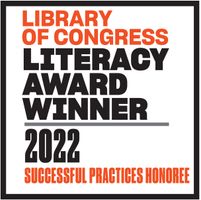NGSS Alignment Helps Teachers Meet Classroom GoalsIn just a few clicks, teachers can add engaging, high-quality reading to science curricula! The Next Generation Science Standards (NGSS) are K–12 science content standards. Standards set the expectations for what students should know and be able to do. ReadWorks passages deepen students' understanding of the Disciplinary Core Ideas (DCI) under each NGSS standard. ReadWorks Case Study: Students Enjoy a Culture of Learning with Article-A-DayAn elementary school in Trinidad and Tobago implemented Article-A-Day school-wide for 10 months, from September 2021 to June 2022. In light of the impact of COVID-19 on student learning and the school’s shift to remote learning, the administrators’ goals for using Article-A-Day as a digital supplement were to increase students’ motivation to read, cultivate a school-wide environment for learning, and increase students’ reading fluency. Students built their background knowledge and vocabulary while being motivated by and engaged in the reading. Read about their success in our recent blog post. Meet our Newest Team Member!
Explore Our Newest ContentWritten by:
Becca Vaughn, Director of Development
0 Comments
An elementary private school in Trinidad and Tobago implemented Article-A-Day school-wide for 10 months, from September 2021 to June 2022. The school administration framed Article-A-Day as a library challenge that students could opt into and earn “house” points, much like reward points in the U.S. In light of the impact of COVID-19 on student learning and the school’s shift to remote learning, the administrators’ goals for using Article-A-Day as a digital supplement were to:
The library challenge started at the beginning of the school year (September 2021) and had run for 16 weeks when we conducted two focus group interviews at the end of January 2022. One interview was with the librarian overseeing the challenge and the school principal, and the other was with five students who participated in the challenge and were in grades equivalent to the U.S’s second to fifth. We hoped to investigate through these interviews three questions about all-school Article-A-Day implementation:
Findings All-school implementation of Article-A-Day produced many clear benefits. First, Article-A-Day allowed students to read texts that they were interested in, while also practicing the reading skills that the administrators knew were necessary for the student’s reading success. Article-A-Day also helped students maintain regular reading because ReadWorks was available as an online tool, which allowed students to read more on their own time and pacing. Lastly, students gained valuable background knowledge, grew their vocabulary, and increased their writing. All of this was seen by their teachers and parents. Finding #1: Culture of Learning A culture of learning is an environment in which students seek to gain knowledge and are eager to learn. Students’ reflections in our interview showed that they had participated in a culture of learning through doing Article-A-Day. One student shared, “I enjoy reading Article-A-Day very much because I get to learn new things.” Another student commented, “[My] favorite thing is that when I read it, I actually see stuff I already know, and that's also when I write.” Students also really enjoyed learning about new topics: “I also learn a lot from those stories, like about events and sometimes about animals too.” This allowed them to engage with the adults in their lives about their newly learned subjects. The students shared that even their parents got involved with their Article-A Day activities. This culture of learning also sparked curiosity on the students’ behalf. The librarian and principal noted that the students read about someone from Trinidad and Tobago and wanted to know more about their island’s historical origins. This culture of learning and curiosity then led to the exploration of new information about their homeland. At the end of the interview, the administrators also asked on behalf of their students for more culturally relevant texts to help quench this curiosity. Through the implementation of Article-A-Day, students clearly learned a great deal and were excited to share this learning and to learn even more. The adults also found that Article-A-Day contributed to a culture of learning. Instead of just reading a passage and answering questions, the students were more willing to discuss what they had learned and apply it to other areas outside of Article-A-Day. The librarian stated, “I think that the kids produced and talked more with the [Book of Knowledge] entries, and I find that they are engaging with the material.” She also shared, “They always come back saying, ‘Ms, I read this, and I read that, and I can't believe this. I can't believe that!’ Even the parents themselves are remarking that they are learning stuff from [Article-A-Day], like they didn't even have a clue what was in the article before! So it's teaching everybody all around.” This shows that the culture of learning built by Article-A-Day is inclusive, supporting all parties involved.  Finding #2: A Culture of Background Knowledge A culture of growing background knowledge is one that allows students to deeply engage with and make connections among what they are reading. Students’ reflections in our interview showed that they had participated in a culture of growing their background knowledge through doing Article-A-Day. A student shared, “It gives me more knowledge to learn more about and to be more interested in those types of things and to ask more questions about the different things in school.” Students developed deep knowledge about the topics from Article-A-Day as they engaged with each topic for a full week. A student even specifically recalled the first woman to study insects, which she learned from one of her Article-A-Day sets. The librarian and principal were excited to see how much Article-A-Day expanded their students' understanding of the world and of new vocabulary, and this showed through students' newfound interest and engagement.  Finding #3: Student Engagement While the students in the study were in part extrinsically motivated by the house points, students were also excited about taking 10 to 15 minutes each day for Article-A-Day. Students shared this excitement with us as they talked about being asked to write two or three things that they learned in their Books of Knowledge and wanting to write more. “And when they say to write two or three things you remember, I don't like to go to just three things. I just wrote a summary of the whole story.” Students also expressed their excitement for doing Article-A-Day even on the weekends. One student stated, “I can see myself jump out of bed and run to my laptop to do ReadWorks.” While many students were initially motivated by the house points, the adults were pleasantly surprised by the broader engagement in reading and writing across grade levels. “At the beginning, what I was really surprised about is that nobody had to be the Big Bad Wolf and ask students, ‘Did you do your homework?’ They're so eager to do it!” This excitement caught the administration by surprise because, in previous experiences with other assignments, they had had to continuously remind their students to do the work. The principal said, “They are engaging with the material and things that they learned. You know it doesn't seem to me to be just parroting or just cutting and pasting something.” Through this all-school Article-A-Day implementation, the principal and librarian saw a clear increase in student engagement. ConclusionIn this exploratory case study, we set out to understand the impact of one school’s all-school Article-A-Day implementation, and we saw clear success and benefits. Through Article-A-Day, students enjoyed reading and learning about new things. This finding is particularly impactful for teachers who are struggling to engage their students; Article-A-Day can help. The students and teachers also found value in having cultural texts that resembled the identities of the students reading them. Overall, students’ reflections showed that they had participated in and enjoyed a culture of learning through doing Article-A-Day at their own pace, and administrators’ reflections showed that the students had built their background knowledge and vocabulary while being motivated by and engaged in the reading. This all-school Article-A-Day implementation was a success for both administrators and students. Written by:
Serena Bradshaw, Research Specialist Susanne Nobles, Ph.D., Chief Academic Officer Wendy Xiao, Director of Teacher Practice |
Categories
All
Archives
July 2024
|





















